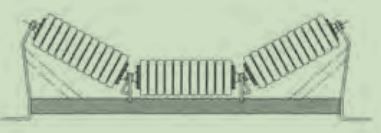 Afrikaans
Afrikaans  Albanian
Albanian  Amharic
Amharic  Arabic
Arabic  Armenian
Armenian  Azerbaijani
Azerbaijani  Basque
Basque  Belarusian
Belarusian  Bengali
Bengali  Bosnian
Bosnian  Bulgarian
Bulgarian  Catalan
Catalan  Cebuano
Cebuano  Corsican
Corsican  Croatian
Croatian  Czech
Czech  Danish
Danish  Dutch
Dutch  English
English  Esperanto
Esperanto  Estonian
Estonian  Finnish
Finnish  French
French  Frisian
Frisian  Galician
Galician  Georgian
Georgian  German
German  Greek
Greek  Gujarati
Gujarati  Haitian Creole
Haitian Creole  hausa
hausa  hawaiian
hawaiian  Hebrew
Hebrew  Hindi
Hindi  Miao
Miao  Hungarian
Hungarian  Icelandic
Icelandic  igbo
igbo  Indonesian
Indonesian  irish
irish  Italian
Italian  Japanese
Japanese  Javanese
Javanese  Kannada
Kannada  kazakh
kazakh  Khmer
Khmer  Rwandese
Rwandese  Korean
Korean  Kurdish
Kurdish  Kyrgyz
Kyrgyz  Lao
Lao  Latin
Latin  Latvian
Latvian  Lithuanian
Lithuanian  Luxembourgish
Luxembourgish  Macedonian
Macedonian  Malgashi
Malgashi  Malay
Malay  Malayalam
Malayalam  Maltese
Maltese  Maori
Maori  Marathi
Marathi  Mongolian
Mongolian  Myanmar
Myanmar  Nepali
Nepali  Norwegian
Norwegian  Norwegian
Norwegian  Occitan
Occitan  Pashto
Pashto  Persian
Persian  Polish
Polish  Portuguese
Portuguese  Punjabi
Punjabi  Romanian
Romanian  Russian
Russian  Samoan
Samoan  Scottish Gaelic
Scottish Gaelic  Serbian
Serbian  Sesotho
Sesotho  Shona
Shona  Sindhi
Sindhi  Sinhala
Sinhala  Slovak
Slovak  Slovenian
Slovenian  Somali
Somali  Spanish
Spanish  Sundanese
Sundanese  Swahili
Swahili  Swedish
Swedish  Tagalog
Tagalog  Tajik
Tajik  Tamil
Tamil  Tatar
Tatar  Telugu
Telugu  Thai
Thai  Turkish
Turkish  Turkmen
Turkmen  Ukrainian
Ukrainian  Urdu
Urdu  Uighur
Uighur  Uzbek
Uzbek  Vietnamese
Vietnamese  Welsh
Welsh  Bantu
Bantu  Yiddish
Yiddish  Yoruba
Yoruba  Zulu
Zulu Idler Roller Types - A Comprehensive Guide to Industrial Solutions
Understanding Idler Roller Types
Idler rollers play a crucial role in various industries, particularly in material handling systems such as conveyor belts. They help to maintain the tension of the belt, guide its alignment, and support the weight of the materials being transported. There are several types of idler rollers, each designed for specific applications and functions.
Understanding Idler Roller Types
Another type is the troughing idler roller. This roller is designed with a concave shape that creates a trough for the belt. This design improves the efficiency of material transport by preventing spillage and keeping loose materials within the confines of the belt. Troughing rollers are typically used in bulk material handling applications, such as the transport of sand, gravel, and other aggregates.
idler roller types

Impact idler rollers are also critical in conveyor systems, particularly where materials are loaded onto a moving belt. These rollers are equipped with cushioning properties that absorb the shock of heavy loads. By minimizing the impact on the conveyor system, they help extend the lifespan of both the belt and the rollers themselves, making them essential in high-impact applications.
For specialized applications, return idler rollers come into play. These rollers support the return side of the conveyor belt, preventing sagging and ensuring smooth operation. They are particularly important in long conveyor systems where maintaining proper tension is critical for function and efficiency.
In addition to these types, idler rollers can also vary by material and design, catering to different environmental conditions and load requirements. For instance, stainless steel rollers are preferred in food processing industries due to their corrosion resistance, while rubber-coated rollers provide additional traction in certain applications.
In summary, the selection of the appropriate idler roller type is integral in optimizing the performance and longevity of conveyor systems. Understanding the specific needs of an application allows for better choices that enhance operational efficiency and reduce maintenance costs. As technology advances, we can expect further innovations in idler roller designs to meet the ever-evolving demands of various industries.
-
Revolutionizing Conveyor Reliability with Advanced Rubber Lagging PulleysNewsJul.22,2025
-
Powering Precision and Durability with Expert Manufacturers of Conveyor ComponentsNewsJul.22,2025
-
Optimizing Conveyor Systems with Advanced Conveyor AccessoriesNewsJul.22,2025
-
Maximize Conveyor Efficiency with Quality Conveyor Idler PulleysNewsJul.22,2025
-
Future-Proof Your Conveyor System with High-Performance Polyurethane RollerNewsJul.22,2025
-
Driving Efficiency Forward with Quality Idlers and RollersNewsJul.22,2025





























